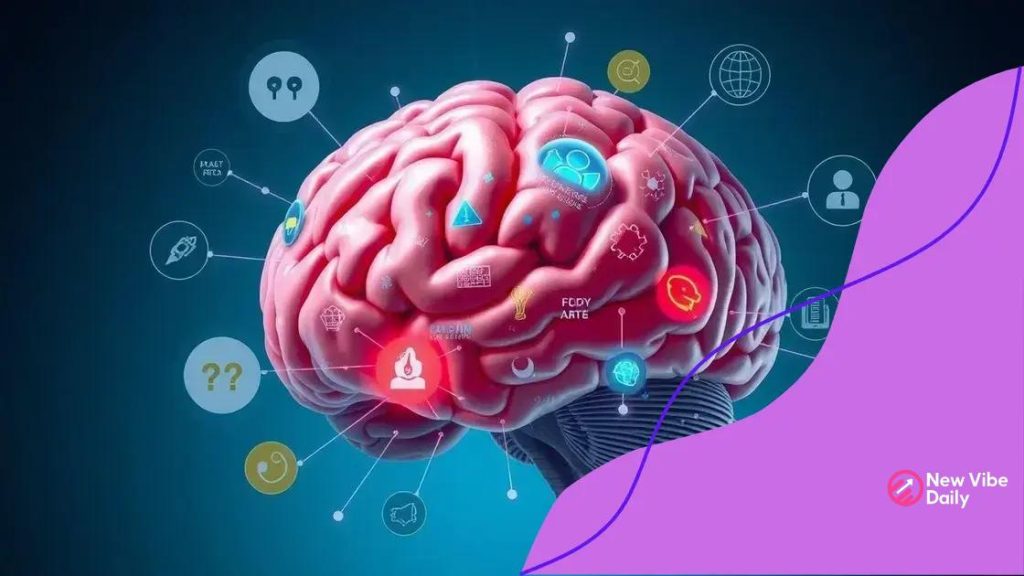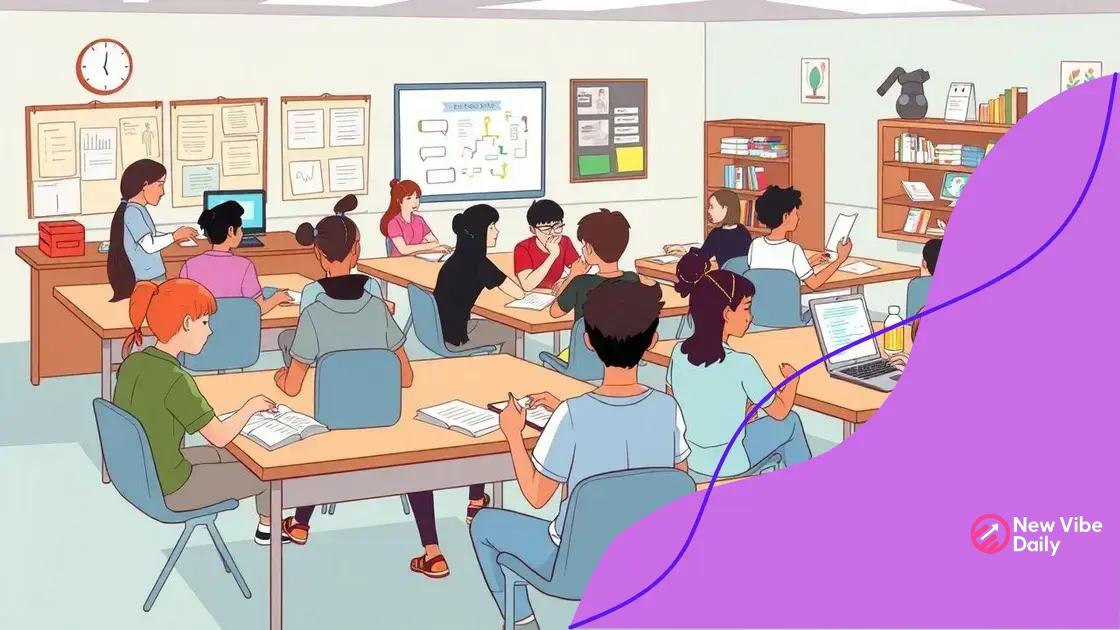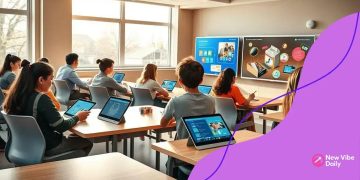Neuroscience and learning methods: unlock your potential

Neuroscience and learning methods significantly enhance education by providing insights into how the brain learns, allowing for personalized approaches and the integration of technology like AI and virtual reality for improved student engagement and outcomes.
Neuroscience and learning methods intertwine to reshape how we understand education. Have you considered how the brain influences the way we learn? This article explores fascinating insights that can empower your learning journey.
Understanding the basics of neuroscience
Understanding the basics of neuroscience is essential for grasping how our brain functions and how it impacts learning. Neuroscience involves studying the brain’s structure, chemistry, and activities. By diving into this field, we can uncover the secrets of how we acquire knowledge and skills.
One critical area in neuroscience is how neurons communicate. Neurons are the building blocks of the brain. They transmit information through electrical impulses and chemical signals, allowing us to think, learn, and make decisions. Additionally, understanding the role of synapses—where neurons connect and communicate—can shed light on memory formation.
Key Components of the Brain
The brain has several key components that contribute to learning and behavior:
- Cerebrum: Responsible for higher brain functions, including thought and action.
- Cerebellum: Plays a role in coordination and balance.
- Brainstem: Controls basic life functions such as breathing and heartbeat.
Another fascinating aspect is brain plasticity. This term refers to the brain’s ability to reorganize itself by forming new connections throughout life. When we learn new things, our brains adapt and change. This offers hope for those recovering from brain injuries or illnesses.
Moreover, hormones and neurotransmitters significantly influence our learning processes. For instance, dopamine is a neurotransmitter that helps regulate motivation and enjoyment, playing a crucial role in reinforcing learning behaviors. When we achieve something, dopamine spikes, making us more likely to pursue further knowledge.
The Importance of Research
Ongoing research in neuroscience continues to uncover the complexities of learning. These findings can transform educational methods, enabling educators to develop techniques tailored to how the brain processes information. Understanding these insights empowers students to harness neuroscience to enhance their learning strategies.
The impact of neuroscience on learning processes
The impact of neuroscience on learning processes is profound. By studying how the brain works, educators can create better strategies to enhance learning. This science reveals not only how information is processed but also how emotions and environment affect our ability to learn.
Understanding how the brain forms memories is crucial. When we learn something new, our brains create connections between neurons. This process, known as synaptic plasticity, shows that our brains can change, reinforcing the idea that practice makes perfect. The more we engage with learning material, the stronger those connections become.
Emotional Influence on Learning
Our emotions significantly impact our learning. Positive emotions can enhance motivation and retention, while negative emotions may hinder them. Therefore, creating a supportive and encouraging learning environment is essential. Some key factors affecting emotional impact include:
- Sense of safety: Students learn better when they feel secure.
- Motivation: Engaging students’ interests fosters a deeper connection to the material.
- Stress levels: High stress can impair cognitive functions, affecting learning ability.
Additionally, neuroscience highlights the importance of different learning styles. Some people are visual learners, while others learn better through auditory methods. Understanding these differences allows teachers to tailor their approaches, making learning more effective. This way, they can integrate various techniques, ensuring that all students can connect with the material.
Neuroscience and Memory Retention
Research has shown that spaced repetition is beneficial for memory retention. Instead of cramming all at once, spreading learning over time helps strengthen memory pathways. This approach is supported by the neuroscience principle known as the spacing effect. When we revisit information at intervals, our brains solidify those memories, making them easier to recall.
Another effective method is active learning. This approach requires students to engage with the material actively, prompting them to apply what they learn in real-world scenarios. Neuroscience supports active learning by demonstrating that hands-on experiences create stronger neural connections compared to passive learning techniques.
Exploring different learning methods

Exploring different learning methods can help us understand how diverse approaches can enhance educational experiences. Different techniques cater to varying learning styles, which means that what works for one person might not work for another.
One popular method is visual learning. Visual learners benefit from diagrams, charts, and videos. These learners often find it easier to grasp concepts when they can see them represented visually. On the other hand, auditory learners excel when they engage with spoken materials like lectures or podcasts. Hearing information helps them retain knowledge more effectively.
Hands-On Learning
Another effective technique is hands-on learning or experiential learning. This approach involves engaging directly in activities or projects. By participating in real-life scenarios, learners can apply their knowledge practically. This method also helps reinforce skills because it allows students to make mistakes and learn from them in a supportive environment.
- Examples of hands-on learning:
- Science experiments in a lab setting.
- Field trips that connect classroom theory to real-world experience.
- Role-playing to practice social skills.
A more recent approach is blended learning. This method combines traditional face-to-face instruction with online resources. Blended learning allows students to take control of their pace and allows for flexibility in learning environments. When done right, it can promote greater engagement and personalization in education.
Collaborative Learning
Collaborative learning encourages students to work together in groups. This fosters communication, problem-solving skills, and teamwork. By discussing concepts with peers, students deepen their understanding and can view topics from different perspectives. Techniques like group projects or peer teaching are effective ways to implement this method.
Moreover, technology plays a key role in exploring new learning methods. Online forums, educational apps, and interactive platforms can enhance the learning experience. These tools help create dynamic learning environments and encourage student participation.
How to apply neuroscience in education
Applying neuroscience in education offers exciting opportunities to improve teaching and learning. Understanding how the brain learns can help educators develop better strategies to engage students and enhance their educational experience.
One effective method is to incorporate multisensory learning techniques. This approach involves using various senses to help students retain information. For example, combining visuals, sounds, and hands-on activities allows students to engage more deeply with the material. This method caters to different learning styles, making it more effective for a wider range of students.
Creating a Positive Learning Environment
Another important aspect is establishing a supportive classroom environment. Neuroscience research shows that a positive atmosphere can significantly affect learning outcomes. When students feel safe and respected, they are more likely to participate actively and absorb information. Simple strategies to create this environment include:
- Encouragement: Acknowledge effort and progress to build confidence.
- Flexible seating: Allow students to choose their seating arrangements to promote comfort and focus.
- Open communication: Encourage students to express their thoughts and feelings.
Additionally, using spaced repetition can enhance memory retention. Instead of cramming, breaking learning sessions into shorter intervals over time allows for better long-term retention of information. Techniques like reviewing material periodically help solidify knowledge and improve recall.
Incorporating Technology
Technology can also play a vital role in applying neuroscience in education. Tools like educational apps, online resources, and interactive platforms can facilitate active learning. For instance, gamifying lessons by using learning games can motivate students while reinforcing key concepts. These interactive elements make learning enjoyable and engaging, leading to better outcomes.
Finally, it’s essential to constantly assess and adapt teaching methods based on student feedback and performance. Understanding individual learning needs through assessments allows educators to tailor their approaches and make informed decisions that enhance the learning experience.
Future trends in neuroscience and learning
Future trends in neuroscience and learning promise to reshape education in exciting ways. As our understanding of the brain grows, new techniques and tools will emerge that can improve how students learn and retain information.
One significant trend is the integration of artificial intelligence in education. AI can analyze how students learn, tailoring materials to fit their individual needs. This personalization allows for more effective learning experiences, making education feel more engaging and accessible. AI-powered tools can provide instant feedback, helping students understand concepts they struggle with.
Virtual and Augmented Reality
Another promising development is the use of virtual and augmented reality in the classroom. These technologies allow students to immerse themselves in learning environments. For instance, a history lesson can come to life with a virtual tour of ancient civilizations. Such immersive experiences can enhance understanding and retention by making learning more interactive.
- Benefits of virtual learning include:
- Increased engagement through interactive simulations.
- Opportunities for experiential learning in a safe environment.
- Enhanced visual understanding of complex concepts.
Moreover, neuroscience research continues to reveal insights into brain-based learning. As we learn more about how the brain works, educators can design more effective teaching methods. Concepts like neurofeedback, which helps students achieve better focus and learning states, are gaining interest. This approach can support students in managing their learning processes actively.
Social-Emotional Learning Integration
Future trends also emphasize integrating social-emotional learning into education. Recognizing the importance of mental health and emotional intelligence in learning is crucial. Programs that teach students how to manage their emotions can lead to better academic outcomes. This shift shows the growing acknowledgment of the brain’s emotional aspects in the learning process.
Finally, continuing professional development for educators will be vital. As new findings emerge from neuroscience, teachers must stay informed. This knowledge will empower them to implement new strategies in their classrooms, fostering a culture of lifelong learning. The combination of new technologies, neuroscience discoveries, and educational practices will create a more effective and inclusive learning environment for all students.
FAQ – Frequently Asked Questions about Neuroscience and Learning Methods
How can neuroscience improve educational strategies?
Neuroscience provides insights into how the brain learns, helping educators develop more effective teaching methods tailored to various learning styles.
What role does artificial intelligence play in education?
AI helps personalize learning experiences by adapting materials to meet individual student needs, improving engagement and outcomes.
How can virtual reality enhance learning?
Virtual reality immerses students in interactive environments, making learning more engaging and memorable compared to traditional methods.
Why is social-emotional learning important?
Social-emotional learning promotes mental health and positive interactions, which can lead to better academic performance and overall well-being for students.






